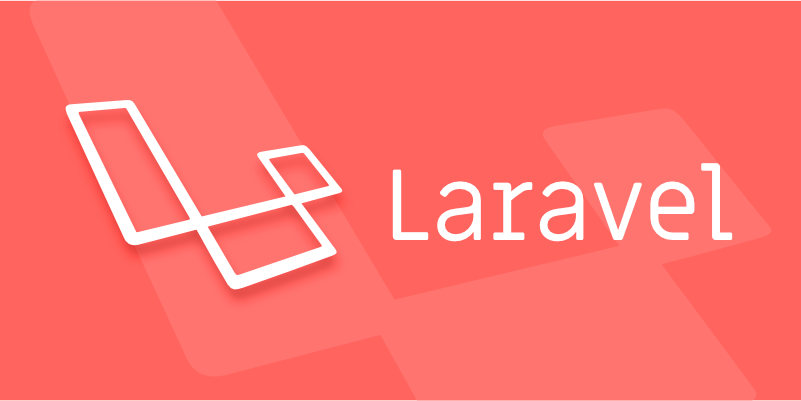Install Laravel Scout and Algolia clients; 2. Configure Algolia credentials in .env files; 3. Add Searchable attributes to the model and define the toSearchableArray method; 4. Use the scout:import command to import existing data; 5. Perform searches through Post::search() and support paging; 6. Configure queues to ensure automatic data synchronization; 7. Optionally use the Algolia SDK to implement advanced functions such as filtering and facetization; 8. Customize index names through the searchableAs method; 9. Call delete or unsearchable methods to delete records from Algolia, and finally use scout:flush Clear the entire index, and the entire process achieves efficient and real-time integration of search functions, and it is necessary to ensure that the queue service is operating normally to ensure synchronization performance, complete and non-interruptible operations.

Using Algolia with Laravel Scout is a powerful way to add fast, scalable search functionality to your Laravel application. Here's how to set it up and use it effectively.

1. Install Laravel Scout and Algolia
First, install Laravel Scout via Composer:
composer requires laravel/scout
Then, publish Scout's configuration file:

php artisan vendor:publish --provider="Laravel\Scout\ScoutServiceProvider"
This creates config/scout.php .
Next, install the Algolia client:

composer requires algolia/algoliasearch-client-php
2. Configure Environment Variables
Add your Algolia credentials to your .env file. You can get these from your Algolia dashboard :
SCOUT_DRIVER=algolia ALGOLIA_APP_ID=your_app_id ALGOLIA_SECRET_KEY=your_admin_api_key
?? Never expose your
ALGOLIA_SECRET_KEYin frontend code. This should only be used on the server side.
3. Make a Model Searchable
Choose the Eloquent model you want to make searchable (eg, App\Models\Post ) and implement the Searchable trait:
<?php
namespace App\Models;
use Illuminate\Database\Eloquent\Model;
use Laravel\Scout\Searchable;
class Post extends Model
{
use Searchable;
// Define the data to be indexed
public function toSearchableArray()
{
$array = $this->toArray();
// Customize what data is sent to Algolia
Return [
'id' => $this->id,
'title' => $this->title,
'content' => $this->content,
'author_name' => $this->user->name ?? null,
];
}
}Only the fields returned in
toSearchableArray()will be available for searching and filtering in Algolia.
4. Import Existing Data
After setting up the model, sync your existing records to Algolia:
php artisan scout:import "App\Models\Post"
If you're using a different namespace or model name, adjust the path accordingly.
5. Perform Searches
Now you can search through your model using Scout:
use App\Models\Post; $posts = Post::search(' Laravel ')->get();
You can also paginate results:
$posts = Post::search('Laravel')->paginate(15);
In your Blade view, render pagination links normally:
{{ $posts->links() }}6. Keep Records Synced
Scout automatically listens to Eloquent events ( created , updated , deleted ) and keeps Algolia in sync if queueing is set up .
? Make sure your Laravel queue is configured (eg, using Redis, database, or Horizon). Otherwise, syncing happens synchronously and may slow down requests.
Set your queue connection in .env :
QUEUE_CONNECTION=redis
7. Advanced Search Features (Using Algolia Directly)
For more advanced features like filtering, faceting, or typo tolerance, you can use Algolia's SDK directly:
$client = new \Algolia\AlgoliaSearch\SearchClient::create(
env('ALGOLIA_APP_ID'),
env('ALGOLIA_SECRET_KEY')
);
$index = $client->initIndex('posts');
$results = $index->search('Laravel', [
'filters' => 'author_name:John',
'hitsPerPage' => 20,
]);This gives you full access to Algolia's powerful API.
8. Optional: Customize Index Name
By default, Scout uses the model's plural name as the index. To customize it:
public function searchableAs()
{
return 'custom_posts_index';
}9. Remove Records from Algolia
To delete a record from the index:
$post->delete(); // Automatically removed via Scout
Or manually unindex:
$post->unsearchable();
To flush all records:
php artisan scout:flush "App\Models\Post"
That's it! With Scout and Algolia, you get real-time, typo-tolerant, fast search with minimal effort. Just make sure your queue driver is running so updates are synchronized smoothly.
Basically: set up Scout, configure Algolia, import data, and start searching — it's that simple once the pieces are in place.
The above is the detailed content of How to use Algolia with Laravel Scout?. For more information, please follow other related articles on the PHP Chinese website!

Hot AI Tools

Undress AI Tool
Undress images for free

Undresser.AI Undress
AI-powered app for creating realistic nude photos

AI Clothes Remover
Online AI tool for removing clothes from photos.

Clothoff.io
AI clothes remover

Video Face Swap
Swap faces in any video effortlessly with our completely free AI face swap tool!

Hot Article

Hot Tools

Notepad++7.3.1
Easy-to-use and free code editor

SublimeText3 Chinese version
Chinese version, very easy to use

Zend Studio 13.0.1
Powerful PHP integrated development environment

Dreamweaver CS6
Visual web development tools

SublimeText3 Mac version
God-level code editing software (SublimeText3)

Hot Topics
 Creating Custom Validation Rules in a Laravel Project
Jul 04, 2025 am 01:03 AM
Creating Custom Validation Rules in a Laravel Project
Jul 04, 2025 am 01:03 AM
There are three ways to add custom validation rules in Laravel: using closures, Rule classes, and form requests. 1. Use closures to be suitable for lightweight verification, such as preventing the user name "admin"; 2. Create Rule classes (such as ValidUsernameRule) to make complex logic clearer and maintainable; 3. Integrate multiple rules in form requests and centrally manage verification logic. At the same time, you can set prompts through custom messages methods or incoming error message arrays to improve flexibility and maintainability.
 Adding multilingual support to a Laravel application
Jul 03, 2025 am 01:17 AM
Adding multilingual support to a Laravel application
Jul 03, 2025 am 01:17 AM
The core methods for Laravel applications to implement multilingual support include: setting language files, dynamic language switching, translation URL routing, and managing translation keys in Blade templates. First, organize the strings of each language in the corresponding folders (such as en, es, fr) in the /resources/lang directory, and define the translation content by returning the associative array; 2. Translate the key value through the \_\_() helper function call, and use App::setLocale() to combine session or routing parameters to realize language switching; 3. For translation URLs, paths can be defined for different languages ??through prefixed routing groups, or route alias in language files dynamically mapped; 4. Keep the translation keys concise and
 Working with pivot tables in Laravel Many-to-Many relationships
Jul 07, 2025 am 01:06 AM
Working with pivot tables in Laravel Many-to-Many relationships
Jul 07, 2025 am 01:06 AM
ToworkeffectivelywithpivottablesinLaravel,firstaccesspivotdatausingwithPivot()orwithTimestamps(),thenupdateentrieswithupdateExistingPivot(),managerelationshipsviadetach()andsync(),andusecustompivotmodelswhenneeded.1.UsewithPivot()toincludespecificcol
 Sending different types of notifications with Laravel
Jul 06, 2025 am 12:52 AM
Sending different types of notifications with Laravel
Jul 06, 2025 am 12:52 AM
Laravelprovidesacleanandflexiblewaytosendnotificationsviamultiplechannelslikeemail,SMS,in-appalerts,andpushnotifications.Youdefinenotificationchannelsinthevia()methodofanotificationclass,andimplementspecificmethodsliketoMail(),toDatabase(),ortoVonage
 Understanding and creating custom Service Providers in Laravel
Jul 03, 2025 am 01:35 AM
Understanding and creating custom Service Providers in Laravel
Jul 03, 2025 am 01:35 AM
ServiceProvider is the core mechanism used in the Laravel framework for registering services and initializing logic. You can create a custom ServiceProvider through the Artisan command; 1. The register method is used to bind services, register singletons, set aliases, etc., and other services that have not yet been loaded cannot be called; 2. The boot method runs after all services are registered and is used to register event listeners, view synthesizers, middleware and other logic that depends on other services; common uses include binding interfaces and implementations, registering Facades, loading configurations, registering command-line instructions and view components; it is recommended to centralize relevant bindings to a ServiceProvider to manage, and pay attention to registration
 Understanding Dependency Injection in Laravel?
Jul 05, 2025 am 02:01 AM
Understanding Dependency Injection in Laravel?
Jul 05, 2025 am 02:01 AM
Dependency injection automatically handles class dependencies through service containers in Laravel without manual new objects. Its core is constructor injection and method injection, such as automatically passing in the Request instance in the controller. Laravel parses dependencies through type prompts and recursively creates the required objects. The binding interface and implementation can be used by the service provider to use the bind method, or singleton to bind a singleton. When using it, you need to ensure type prompts, avoid constructor complications, use context bindings with caution, and understand automatic parsing rules. Mastering these can improve code flexibility and maintenance.
 Strategies for optimizing Laravel application performance
Jul 09, 2025 am 03:00 AM
Strategies for optimizing Laravel application performance
Jul 09, 2025 am 03:00 AM
Laravel performance optimization can improve application efficiency through four core directions. 1. Use the cache mechanism to reduce duplicate queries, store infrequently changing data through Cache::remember() and other methods to reduce database access frequency; 2. Optimize database from the model to query statements, avoid N 1 queries, specifying field queries, adding indexes, paging processing and reading and writing separation, and reduce bottlenecks; 3. Use time-consuming operations such as email sending and file exporting to queue asynchronous processing, use Supervisor to manage workers and set up retry mechanisms; 4. Use middleware and service providers reasonably to avoid complex logic and unnecessary initialization code, and delay loading of services to improve startup efficiency.
 Handling exceptions and logging errors in a Laravel application
Jul 02, 2025 pm 03:24 PM
Handling exceptions and logging errors in a Laravel application
Jul 02, 2025 pm 03:24 PM
The core methods for handling exceptions and recording errors in Laravel applications include: 1. Use the App\Exceptions\Handler class to centrally manage unhandled exceptions, and record or notify exception information through the report() method, such as sending Slack notifications; 2. Use Monolog to configure the log system, set the log level and output method in config/logging.php, and enable error and above level logs in production environment. At the same time, detailed exception information can be manually recorded in report() in combination with the context; 3. Customize the render() method to return a unified JSON format error response, improving the collaboration efficiency of the front and back end of the API. These steps are






